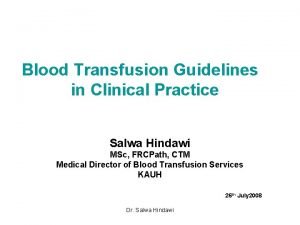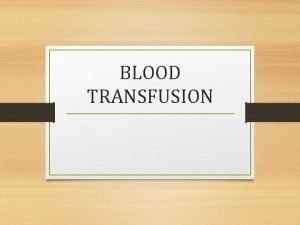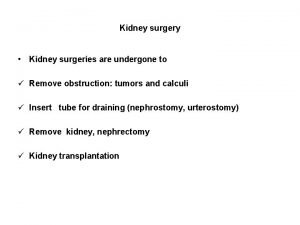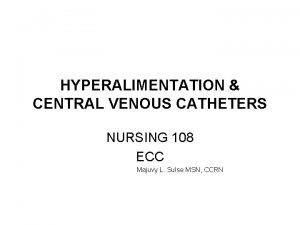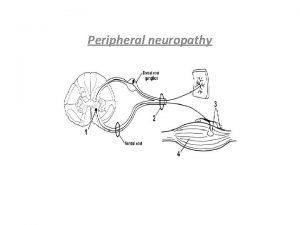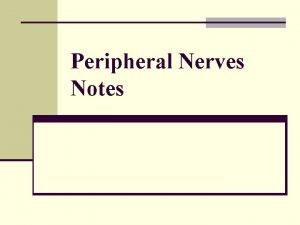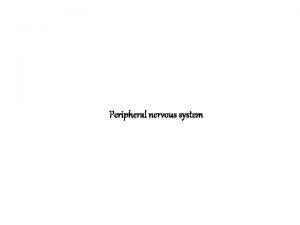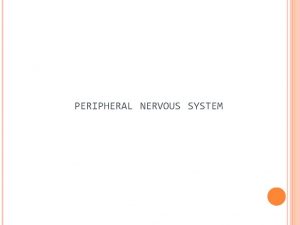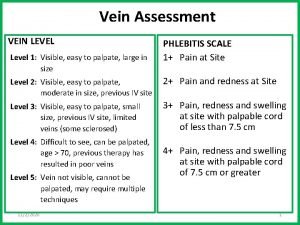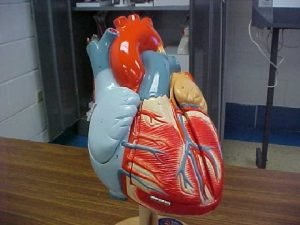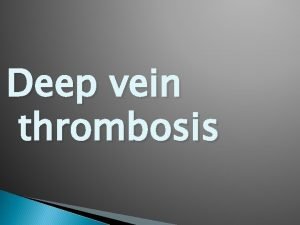Peripheral Vein Catheterization Indication Drug administration Hydration Transfusion























- Slides: 23

Peripheral Vein Catheterization

Indication • • • Drug administration Hydration Transfusion of blood components Surgery Emergency care Other situations (blood samples etc)

Contraindications • • Infection Phlebitis (inflammation of vein) Sclerosed veins Previous intravenous infiltration Burns or traumatic injuries Arteriovenous fistula Surgical procedures

Difficult access • • Dehydration Shock Chemotherapy Intravenous substances abuse

Anatomy • Veins of upper extremity • Cephalic vein – radial side • Basilic vein – ulnar side • Communicates in cubital fossa and wrist

Site selection • Accessibility of vein • Patient age • Comfort • Urgency of the situation In general upper extremity veins are preferred • More durable • Fewer complication

Preferred veins

Lower extremity veins used

Lower extremity veins • Saphenous vein • Dorsal veins of the foot • Higher risk of thrombosis and embolism

Veins used for cannulation in children • Leg and feet veins • Scalp veins • External jugular vein

Equipment • • • Gloves Eye protector Tourniqet Antiseptic solution and sterile gauze Saline flush Occlusive dressing and tape Catheter Intravenous fluid bag with tubing Sharps container Local or topical anesthetic in some cases


Size of catheteters Small size (20 -24 g) • Less resistance to blood flow • Fewer complications Big sizes (14 -16 g) • Acute situations

Preparation • Explain the procedure • Potential complications: Bleeding Bruising Infection • Washing hands • Wearing gloves • Using Eye protection • Patient in supine position • Inspect and Palpate vein, use the tourniqet • Use the antiseptic

Ideal vein for catheterizaion • • Round Firm Flexible Full Clean the site with antiseptic solution Allow area to dry completely Local anesthetic can be used Inspect the catheteter for damage Superficial veins must be stabilized


Insert the needle

Do not insert catheter too deeply

• When catheter in the lumen watch for initial flashback of blood • Then lower the catheter – it must be almost parallel to the skin • Stabilize the needle and move only plastic part of the catheter forward • Remove the tourniqet • Slowly remove the needle, • to prevent blood loss from the open plastic canula use direct pressure on the vein proximal to catheter • Never attempt to reinsert the neddle into the plastic canula • Remove blood from the chamber of catheter with flash of saline

Signs of extravasation • • Swelling Redness Leakage Discomfort

Transparent occlusive dressing

Complications • • Pain Bruising Infection Extravasation Phlebitis Thrombosis Embolism Nerve damage

Avoiding complications • Proper sterile technique • Selection of the appropriately sized catheter
 Platelet transfusion goals
Platelet transfusion goals Blood transfusion table
Blood transfusion table Indication of transfusion
Indication of transfusion Indication of transfusion
Indication of transfusion Fresh frozen plasma vs platelets
Fresh frozen plasma vs platelets Indications for platelet transfusion
Indications for platelet transfusion Self catheterization adaptive equipment
Self catheterization adaptive equipment Nursing management of urinary retention ppt
Nursing management of urinary retention ppt Nurses responsibility in bowel wash
Nurses responsibility in bowel wash Bladder catheterization
Bladder catheterization Factors affecting absorption of drug
Factors affecting absorption of drug Jordan food and drug administration
Jordan food and drug administration Oral route advantages
Oral route advantages Drug administration definition
Drug administration definition Parenteral route
Parenteral route Factors affecting choice of route of drug administration
Factors affecting choice of route of drug administration What is pharmacology
What is pharmacology Mydriatics and miotics drugs
Mydriatics and miotics drugs Roa medication
Roa medication Non parenteral route
Non parenteral route Methods of adulteration of crude drugs
Methods of adulteration of crude drugs Hydration shells
Hydration shells Is acid catalyzed hydration syn or anti
Is acid catalyzed hydration syn or anti Heat of hydration
Heat of hydration

